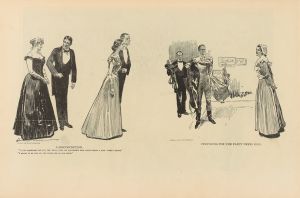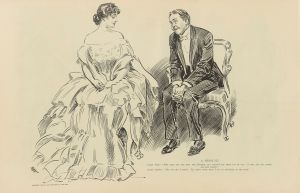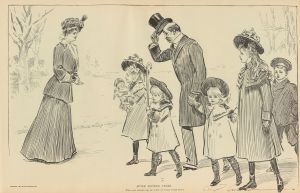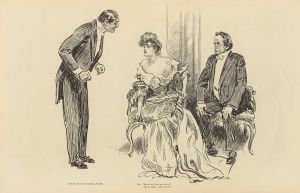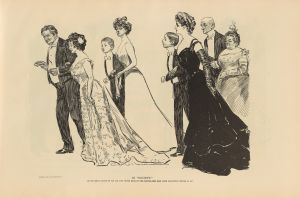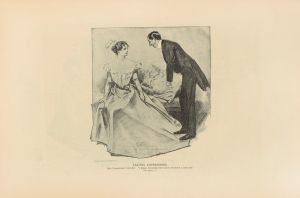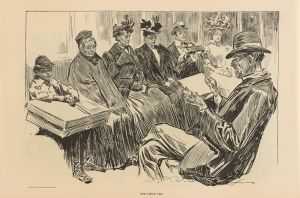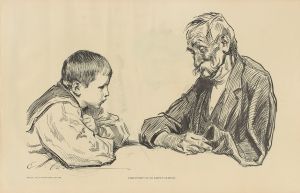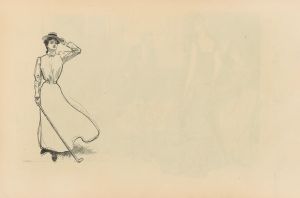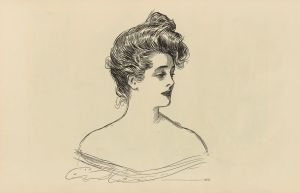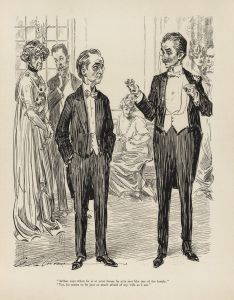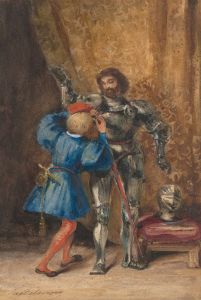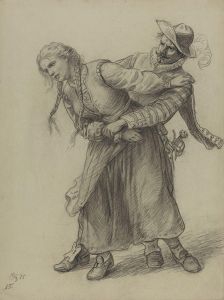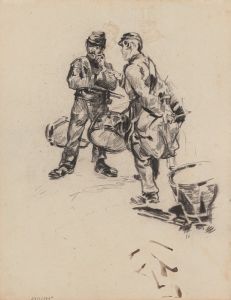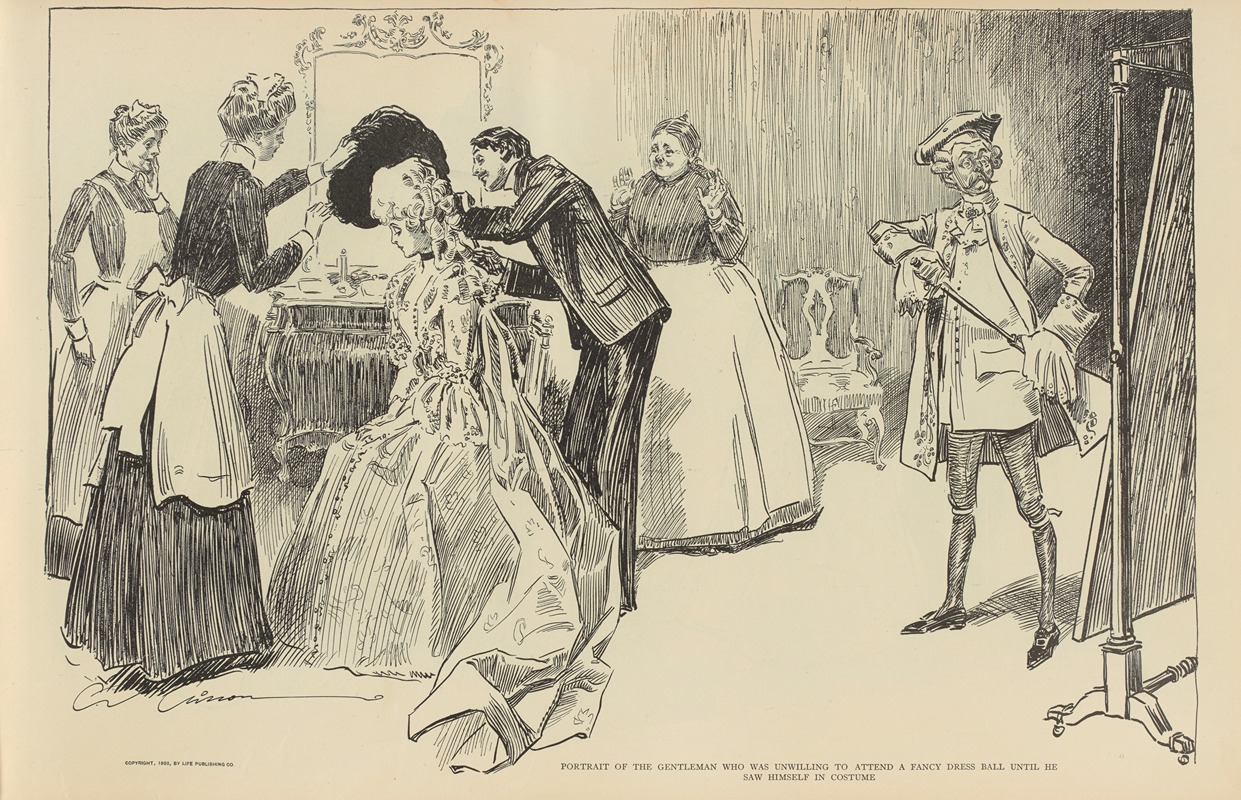
Portrait of the gentleman who was unwilling…
A hand-painted replica of Charles Dana Gibson’s masterpiece Portrait of the gentleman who was unwilling…, meticulously crafted by professional artists to capture the true essence of the original. Each piece is created with museum-quality canvas and rare mineral pigments, carefully painted by experienced artists with delicate brushstrokes and rich, layered colors to perfectly recreate the texture of the original artwork. Unlike machine-printed reproductions, this hand-painted version brings the painting to life, infused with the artist’s emotions and skill in every stroke. Whether for personal collection or home decoration, it instantly elevates the artistic atmosphere of any space.
Charles Dana Gibson was an influential American illustrator, best known for his creation of the "Gibson Girl," an iconic representation of the American woman at the turn of the 20th century. His work captured the essence of American society during this period, often with a humorous or satirical edge. One of his notable works is "Portrait of the Gentleman Who Was Unwilling…," which exemplifies his skill in capturing character and emotion through illustration.
Gibson was born in Roxbury, Massachusetts, in 1867 and showed an early interest in art. He studied at the Art Students League in New York City, where he honed his skills in drawing and illustration. His career took off in the 1890s when his illustrations began appearing in popular magazines such as Life, Harper's Weekly, and Scribner's. Gibson's style was characterized by its clean lines and attention to detail, which brought his characters to life on the page.
"Portrait of the Gentleman Who Was Unwilling…" is a fine example of Gibson's ability to convey narrative through a single image. While specific details about the creation and publication of this particular illustration are scarce, it is consistent with Gibson's body of work, which often explored themes of social interaction and the complexities of human relationships. His illustrations frequently depicted scenes of upper-class society, capturing the nuances of social etiquette and the often humorous or ironic situations that arose within it.
Gibson's work, including "Portrait of the Gentleman Who Was Unwilling…," was part of a broader movement in illustration during the late 19th and early 20th centuries. This period saw the rise of illustrated magazines, which became a popular medium for storytelling and commentary on contemporary life. Illustrators like Gibson played a crucial role in shaping public perception and providing visual commentary on the social issues of the day.
The "Gibson Girl," perhaps Gibson's most enduring legacy, was a representation of the idealized American woman. She was independent, confident, and fashionable, embodying the changing roles of women in society during the Progressive Era. While "Portrait of the Gentleman Who Was Unwilling…" does not feature the Gibson Girl, it shares the same attention to character and societal observation that made Gibson's work so popular.
Gibson's influence extended beyond illustration. His work captured the imagination of the public and influenced fashion, advertising, and even the emerging film industry. The characters he created were not just drawings but became part of the cultural fabric of the time, reflecting and shaping the aspirations and attitudes of the American public.
In summary, "Portrait of the Gentleman Who Was Unwilling…" is a testament to Charles Dana Gibson's skill as an illustrator and his keen insight into human nature and society. While specific details about this illustration may be limited, it remains an important part of Gibson's oeuvre, showcasing his ability to blend artistry with social commentary. His work continues to be celebrated for its artistic merit and its role in capturing the spirit of an era.





